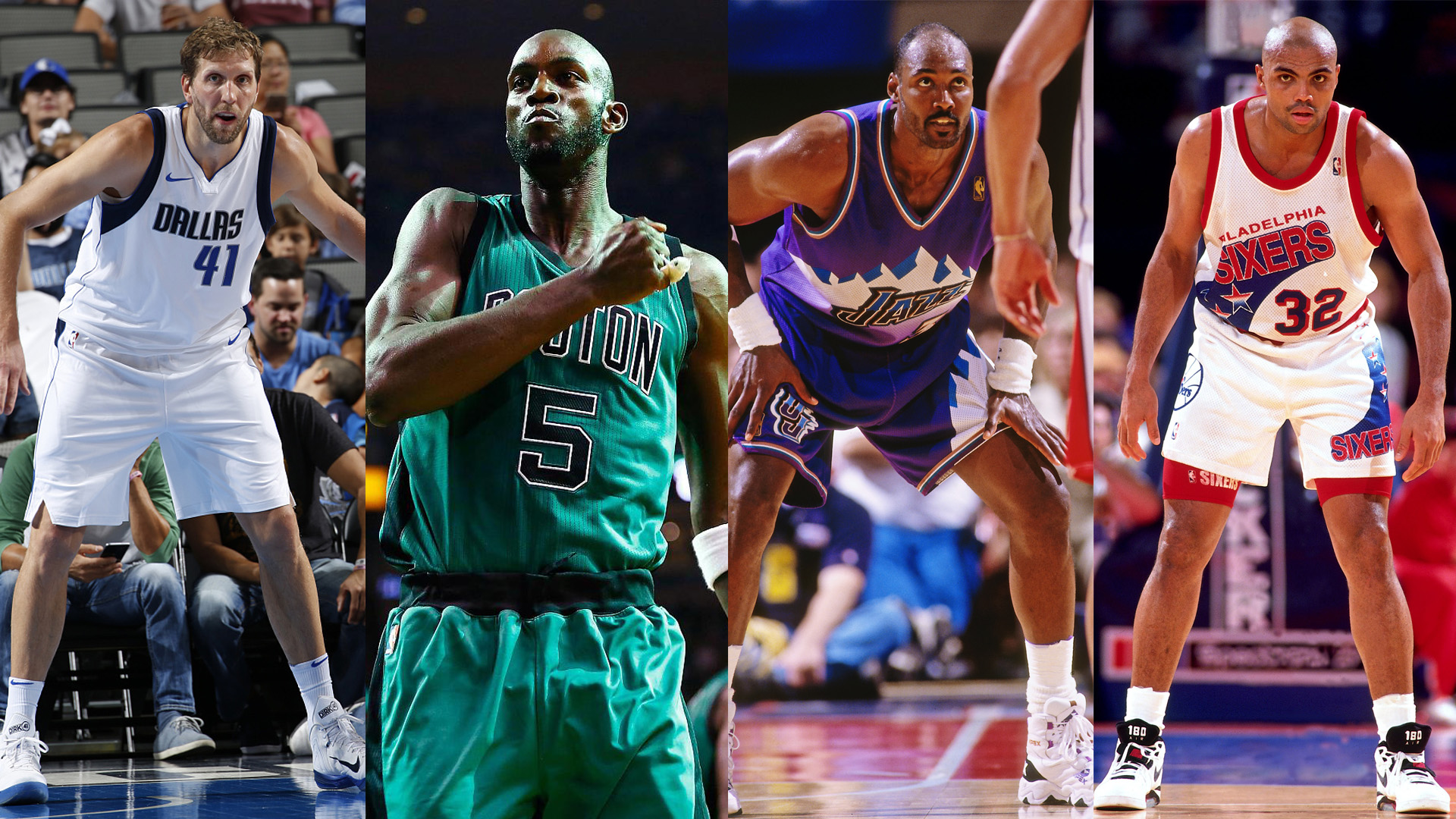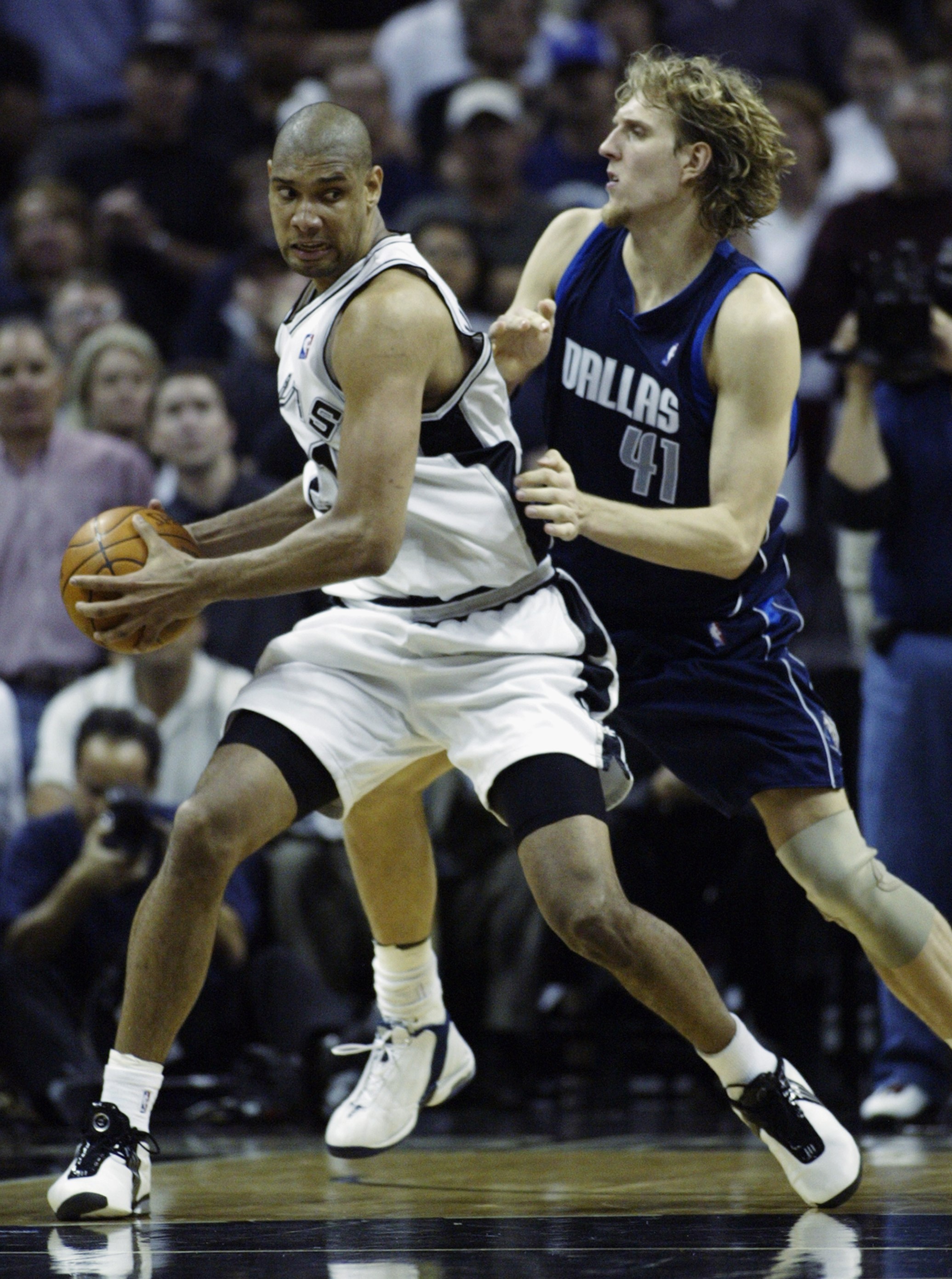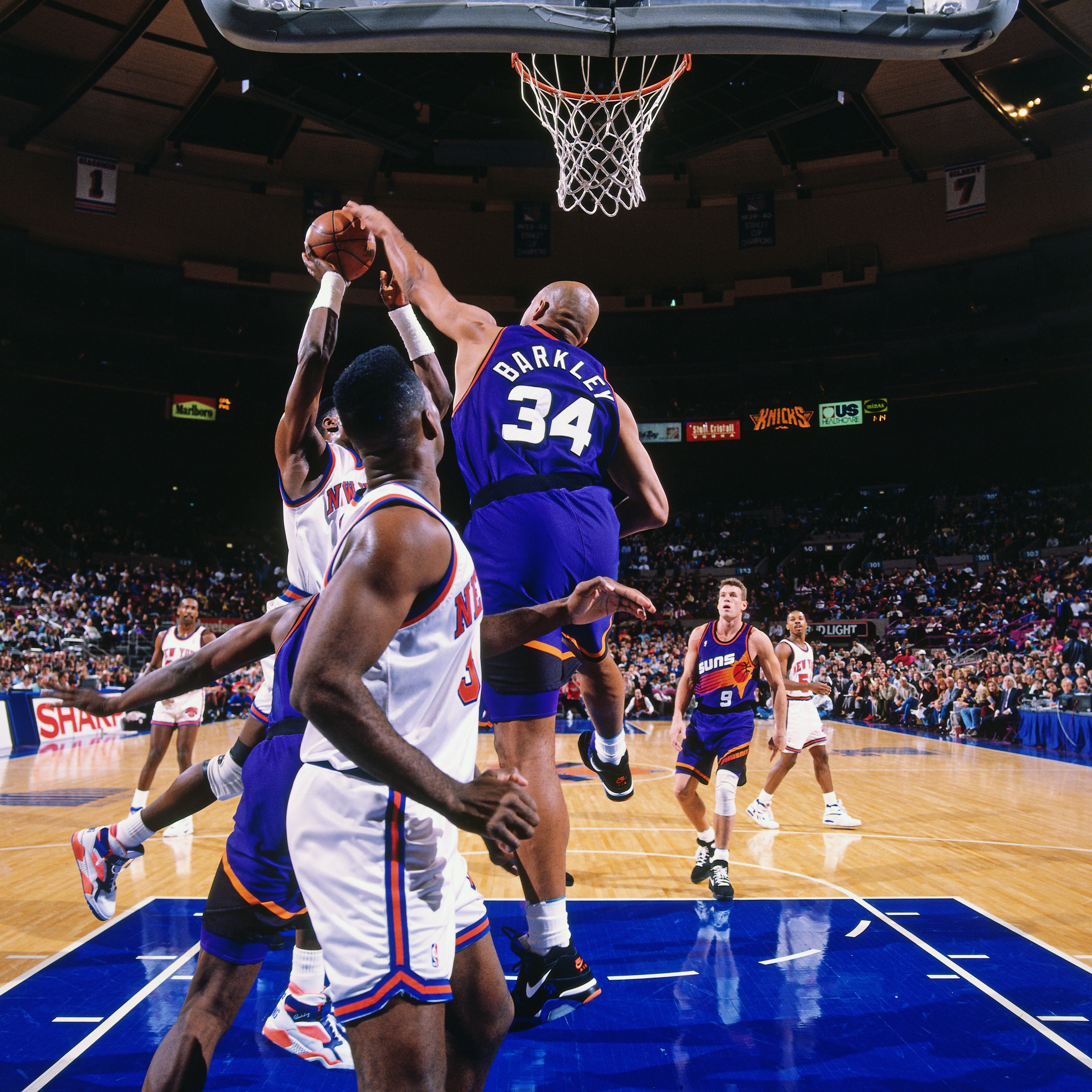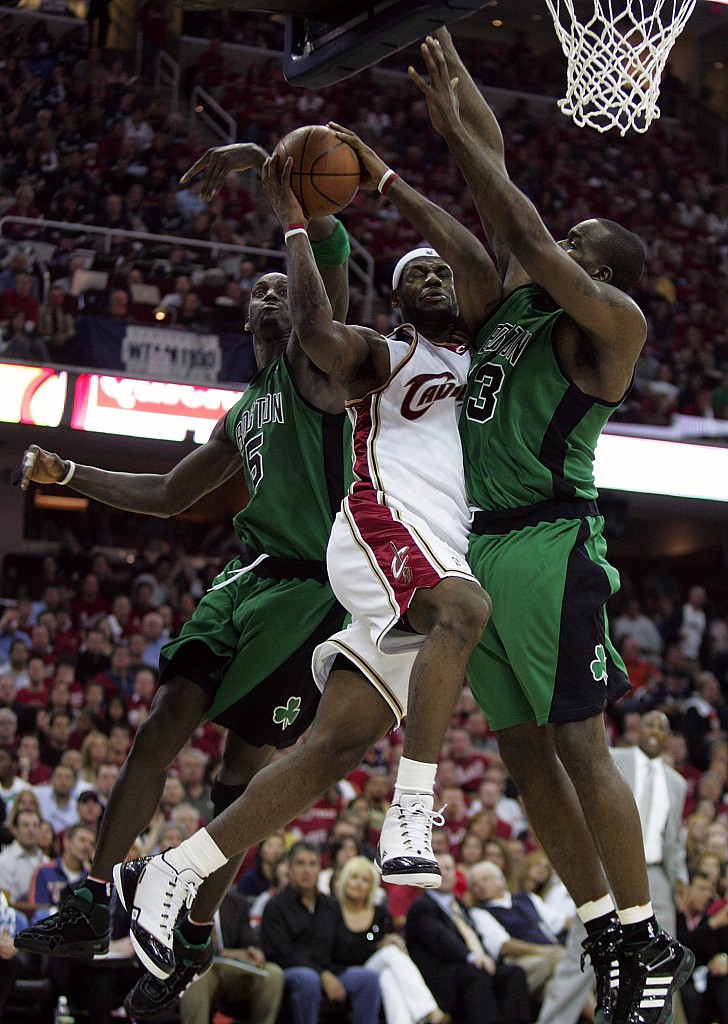
From L to R: Dirk Nowitzki of the Dallas Mavricks, Kevin Garnett of the Boston Celtics, Karl Malone of the Utah Jazz and Charles Barkley of the Philadelphia 76ers. /VCG
From L to R: Dirk Nowitzki of the Dallas Mavricks, Kevin Garnett of the Boston Celtics, Karl Malone of the Utah Jazz and Charles Barkley of the Philadelphia 76ers. /VCG
Editor's note: Since winning his third ring in 2005, Tim Duncan has proven himself the undeniable greatest power forward in NBA history, just like Michael Jordan of shooting guards and Magic Johnson of point guards. However, who should be the man standing next to Duncan? That is a contentious question, and in this four-episode series, four of the best candidates –Dirk Nowitzki, Kevin Garnett, Karl Malone and Charles Barkley, face off for the honor of second-best power forward. We've set side by side their career honors and offense skills, and in this episode, we compare what each player can do in defense.
In this area, Garnett again was not on the same level with the other three, but right in the opposite direction from the offense discussion. So let's talk about Nowitzki, Barkley and Malone.

Dirk Nowitzki #41 of the Dallas Mavericks defends Tim Duncan of the San Antonio Spurs in Game 1 of the Western Conference Finals at the SBC Center in San Antonio, Texas, May 19, 2003. /VCG
Dirk Nowitzki #41 of the Dallas Mavericks defends Tim Duncan of the San Antonio Spurs in Game 1 of the Western Conference Finals at the SBC Center in San Antonio, Texas, May 19, 2003. /VCG
Nowitzki's defense, during most of his career, was underestimated. As a true seven-footer, Nowitzki was a qualified rebound protector. He did not have the explosive athleticism to conduct spike blocks in the game, but Nowitzki could fill the paint with his size and had strong enough lower body to tussle with most of the big men in the NBA.
Of course, as Nowitzki grew old, he continued to get slower. That's why in the late years in his career, he always became the background of many poster moves. He knew what to do in defense but his body was not as fast as his mind. When he'd reached the defensive position, it was usually too late.

Charles Barkley #34 of the Phoenix Suns blocks a shot in the game against the New York Knicks at the Madison Square Garden in New York City, 1993. /VCG
Charles Barkley #34 of the Phoenix Suns blocks a shot in the game against the New York Knicks at the Madison Square Garden in New York City, 1993. /VCG
Barkley has always been a top rebounder in his whole career, not just for his remarkable athleticism. He was also doing great in details like screening and positioning. In fact, Barkley and Dennis Rodman might be two of the best undersized rebounders in NBA history. Moreover, thanks to his speed, Barkley made a good choice for switch defense on perimeter players.
However, people overestimated Barkley's defense because of his block numbers and those highlights of him denying the opponent's shot. His 1.93-meter-height was lethal in defense because no matter how strong his lower body was, Barkley could not stop big men from having their own ways above his head.

Karl Malone #32 of the Utah Jazz defends Hakeem Olajuwon #34 of the Houston Rockets in Game 5 of the Western Conference playoffs at the Delta Center in Salt Lake City, Utah, May 3, 1998. /VCG
Karl Malone #32 of the Utah Jazz defends Hakeem Olajuwon #34 of the Houston Rockets in Game 5 of the Western Conference playoffs at the Delta Center in Salt Lake City, Utah, May 3, 1998. /VCG
Like Barkley, Malone was not a reliable defender when he was young. He's strong and fast but most of his defensive moves came from athletic instinct. Nonetheless, when you played long enough for Jerry Sloan, everyone managed to learn how to defend in the best way for the team.
While Malone continued to improve his jump shooting, he was also becoming a better defender. With his steel-like muscles and power, Malone did fear anyone in one-one-one physical defense. When he was defending those who were at one size larger than him, Malone had enough tricks to embarrass them like pulling the chair. As for the power of his elbows, ask Isiah Thomas or David Robinson.

Kevin Garnett #5 of the Boston Celtics defends LeBron James #23 of the Cleveland Cavaliers in Game 6 of the Eastern Conference semifinals at the Quicken Loans Arena in Cleveland, Ohio, May 16, 2008. /VCG
Kevin Garnett #5 of the Boston Celtics defends LeBron James #23 of the Cleveland Cavaliers in Game 6 of the Eastern Conference semifinals at the Quicken Loans Arena in Cleveland, Ohio, May 16, 2008. /VCG
Unlike the other three, Garnett, for most years in his career, brought a defensive system by himself – only very limited, or fewer than five players in NBA history could do that. Garnett was a top one-on-one defender, both on big man and on perimeter players – the only two giants he needed help cover in his era were probably Shaquille O'Neal and Yao Ming because of the huge power and weight differences.
Nonetheless, Garnett's true defensive power was that he made continuous trapping in high posts possible. Before the right knee sprain in 2009, Garnett was the only one in modern basketball who could join his perimeter teammate for double teaming and was fast enough to return to the paint to protect the rim.

Kevin Garnett #5 of the Boston Celtics blocks a shot by Kobe Bryant #24 of the Los Angeles Lakers in Game 4 of the NBA Finals at the Staples Center in Los Angeles, California, June 12, 2008. /VCG
Kevin Garnett #5 of the Boston Celtics blocks a shot by Kobe Bryant #24 of the Los Angeles Lakers in Game 4 of the NBA Finals at the Staples Center in Los Angeles, California, June 12, 2008. /VCG
Garnett's existence was the reason why the Boston Celtics in 2008 were able to knock down the league's top 2 players, Kobe Bryant and LeBron James, though they were totally different types in offense. Bryant and James had enough ways to take down Ray Allen or Paul Pierce, but they always had to watch out for KG who's always ready to appear in the best position to disrupt the opponent's offense.
In this area, Garnett>Malone>Barkley>Nowitzki